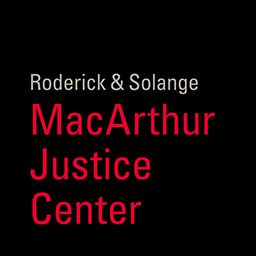Bowe v. United States
Michael Bowe sought to bring a second-or-successive motion to vacate to challenge his federal conviction based on the Supreme Court’s decision in United States v. Davis, 588 U.S. 445 (2019). The Eleventh Circuit prevented him from doing so, however, because it wrongly applied a restriction on second-or-successive habeas corpus applications by state prisoners—based on a statute that refers only to state prisoners, not federal prisoners like Mr. Bowe. Co-counseling with Andrew Adler and Janice Bergmann at the Federal Public Defender’s Office, the MacArthur Justice Center is fighting to prevent courts from departing from AEDPA’s text to create new restrictions on federal prisoners’ ability to seek post-conviction relief in federal court.
In 2008, Mr. Bowe was convicted of a gun charge under 18 U.S.C. § 924(c) and was sentenced to a mandatory consecutive term of ten years in federal prison. That conviction depended on Section 924(c)’s definition of a “crime of violence.” In 2019, the Supreme Court invalidated a key component of Section 924(c)’s definition, known as the “residual clause,” as unconstitutionally vague.
Mr. Bowe promptly sought leave to file a motion to vacate his sentence based on the Supreme Court’s decision, United States v. Davis, 588 U.S. 445 (2019). He had previously filed a motion to vacate based on a different claim, and so he was required to satisfy the restrictions on “second-or-successive” motions to vacate imposed by the Antiterrorism and Effective Death Penalty Act. In particular, he needed to demonstrate that Davis constituted a “new rule of constitutional law” that was made retroactive by the Supreme Court, and he needed to obtain authorization to file from the Court of Appeals. The same year Davis was decided, the Eleventh Circuit held that it created a new and retroactive rule of law, satisfying these requirements. Accordingly, Mr. Bowe sought authorization from the Court of Appeals.
The Eleventh Circuit, however, dismissed Mr. Bowe’s request, because under then-existing Eleventh Circuit precedent, his conviction still satisfied a different component of Section 924(c)’s definition of a “crime of violence,” known as the elements clause. Accordingly, the Eleventh Circuit concluded that Mr. Bowe’s Davis claim was not sufficient to entitle him to relief.
A few years later, however, the Supreme Court invalidated the Eleventh Circuit’s elements-clause precedent. In United States v. Taylor, 596 U.S. 845 (2022), the Supreme Court held that convictions like Mr. Bowe’s did not qualify under the elements clause. As a result, every possible basis for a “crime of violence” was eliminated.
Mr. Bowe returned to the Eleventh Circuit to request authorization to raise his Davis claim. But the Eleventh Circuit dismissed his request again—this time, based on an entirely different rule. For state prisoners filing a habeas corpus application under 28 U.S.C. § 2254, AEDPA imposed an automatic rule requiring dismissal of any claim that was “presented in a prior application.” 28 U.S.C. § 2244. Ignoring the statute’s express reference to applications “under section 2254,” the Eleventh Circuit had concluded that this rule applied to federal prisoners filing motions to vacate under 28 U.S.C. § 2255, as well. Accordingly, because Mr. Bowe had attempted to raise his Davis claim before, the Court automatically dismissed it, as well as his request for authorization.
Mr. Bowe’s counsel at the Federal Public Defender’s Office, Andrew Adler and Janice Bergmann, pursued every avenue to obtaining review of this plainly erroneous holding. They asked the Eleventh Circuit to reconsider its prior decision en banc, which it refused to do. They filed an original petition for habeas corpus in the U.S. Supreme Court, which it denied—notwithstanding the expressed desire of three different Justices to address the question presented. At the Supreme Court’s urging, counsel returned to the Eleventh Circuit and asked it to either certify the question to the Supreme Court, or to reconsider the question en banc. The court denied both requests.
Accordingly, Mr. Bowe’s counsel successfully petitioned the Supreme Court for a writ of certiorari. The MacArthur Justice Center is co-counseling with Mr. Adler and Ms. Bergmann to represent Mr. Bowe in this important case to defend federal prisoners’ ability to access post-conviction relief and challenge convictions that are legally invalid based on new rules of constitutional law. The Supreme Court has long required courts to adhere to the text of AEDPA, and this case seeks to ensure that courts are not permitted to depart from AEDPA’s text in order to create new restrictions on federal prisoners’ ability to seek post-conviction relief.
U.S. Supreme Court
For media inquires please contact:
(NOTE: This mailbox is for media inquiries only. All other inquiries, including legal and representation questions, should be submitted through our Contact Form.)
